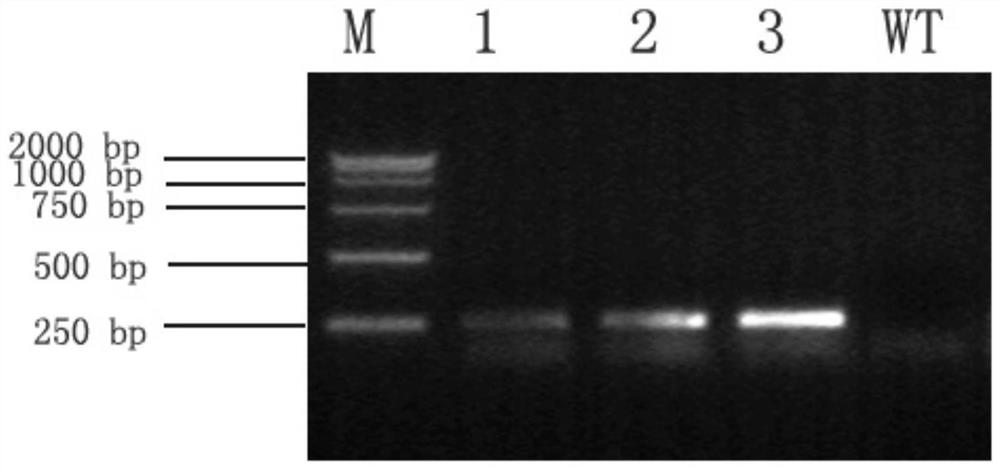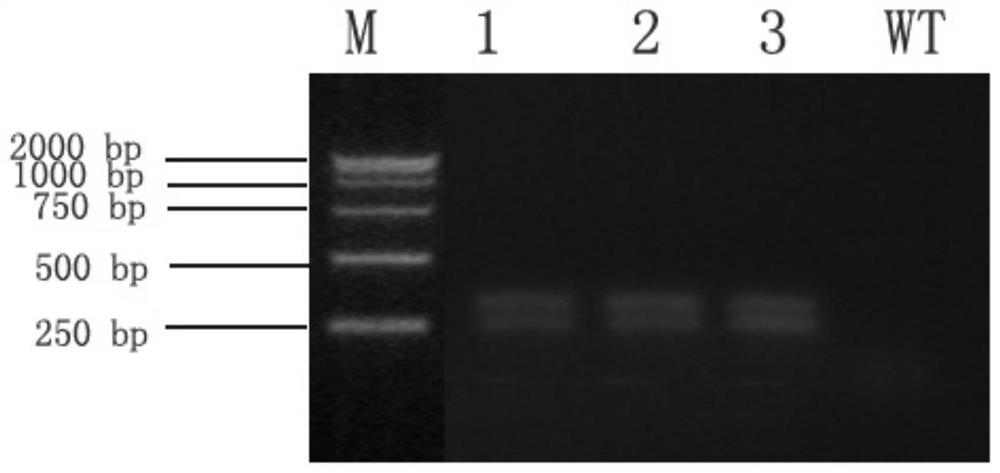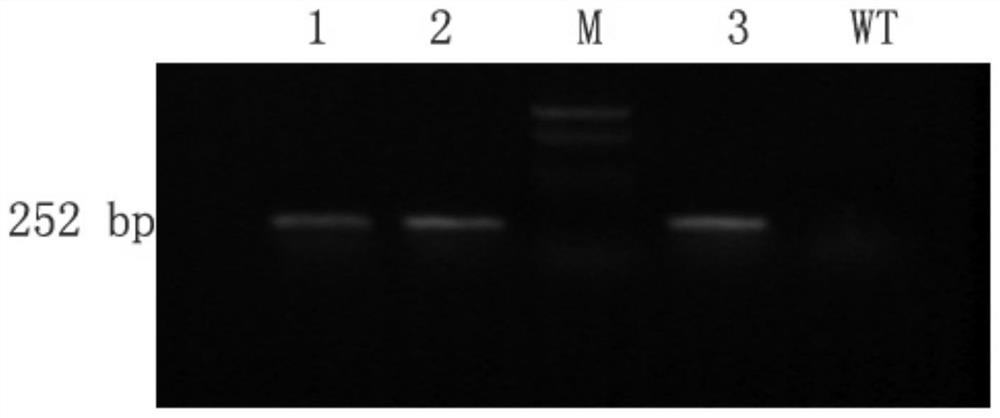Application of gene derived from Klebsiella pneumonia
A gene and pneumonia technology, applied in the field of environmental pollutant treatment, can solve the problem of limited efficiency of plants in dealing with environmental pollutants
- Summary
- Abstract
- Description
- Claims
- Application Information
AI Technical Summary
Problems solved by technology
Method used
Image
Examples
Embodiment 1
[0035] Example 1: Gene optimization and cloning
[0036] Carry out gene screening to Klebsiella pneumoniae, obtain the gene of sequence such as SEQ ID NO:1, the protein encoded by this gene has the activity of degrading environmental pollutant TNT, it is named as TNT degrading gene. The gene can be used to construct a transgenic plant, and the transgenic plant containing the gene can be applied to the practice of phytoremediation of an environment polluted by TNT. The gene derived from Klebsiella pneumoniae of sequence such as SEQ ID NO:1 is transformed according to the plant codon preference, and the optimized gene (called the optimized TNT degrading gene) of sequence such as SEQ ID NO:3 is obtained, and the gene SEQ ID NO:3 Both ID NO: 1 and optimized gene SEQ ID NO: 3 encode a protein with a sequence such as SEQ ID NO: 2. The optimized gene was synthesized by chemical synthesis, and the primers used in the synthesis were as follows:
[0037] First primer: 5'-GGATCCATGGACA...
Embodiment 2
[0051] Embodiment 2: Preparation of transgenic Arabidopsis
[0052] Agrobacterium tumefaciens LBA4404 strain was selected, and SBSV was transferred into the strain by electric shock method. In addition to the LBA4404 strain, one of LBA4404, GV3101 or AGL-1 can be used. The method for preparing Agrobacterium competent cells is a conventional method in the prior art, specifically: first expand and cultivate Agrobacterium, pick LBA4404 bacterial strain single bacterium colony to 25mL YEB medium (all contain 50mg / L rifamycin in the medium ) to cultivate overnight, and then take 5mL of the overnight culture and transfer it to 100ml YEB medium for expanded culture (OD 600 The culture was terminated after reaching 0.8). Place the bacterial solution on ice for 10 minutes to stop the growth of Agrobacterium, then collect the bacterial cells by centrifugation (4°C, 5000 rpm), and wash the collected bacterial cells twice with sterile double distilled water. Then use 500 μL of 10% glyc...
Embodiment 3
[0055] Embodiment 3: the preparation of transgenic tobacco
[0056] Tobacco (K326) is carried out transgenic operation using the recombinant plasmid SBSV, and the method is the Agrobacterium co-transfection method of the prior art. Tobacco seeds were first sterilized (using 75% alcohol and sodium hypochlorite solution in turn to sterilize), then spread the seeds on MS medium (28°C cultivation temperature), cut off the young leaves of tobacco after germination, and put them in a medium containing 1 μg / mL NAA and 4 μg / mLBA MS medium, cultured at 22°C for 1 day. Get the transgenic Agrobacterium prepared in Example 1 and expand the culture to an OD value of 1.0, centrifuge and collect the thalline, and wash the thalline with sterile water, suspend the thalline with MS culture solution (thalline equal volume), and use the suspension of the thalline The young tobacco leaves were soaked in the liquid for 8 min, then the young tobacco leaves were taken out, the liquid was blotted dry...
PUM
 Login to View More
Login to View More Abstract
Description
Claims
Application Information
 Login to View More
Login to View More - Generate Ideas
- Intellectual Property
- Life Sciences
- Materials
- Tech Scout
- Unparalleled Data Quality
- Higher Quality Content
- 60% Fewer Hallucinations
Browse by: Latest US Patents, China's latest patents, Technical Efficacy Thesaurus, Application Domain, Technology Topic, Popular Technical Reports.
© 2025 PatSnap. All rights reserved.Legal|Privacy policy|Modern Slavery Act Transparency Statement|Sitemap|About US| Contact US: help@patsnap.com



